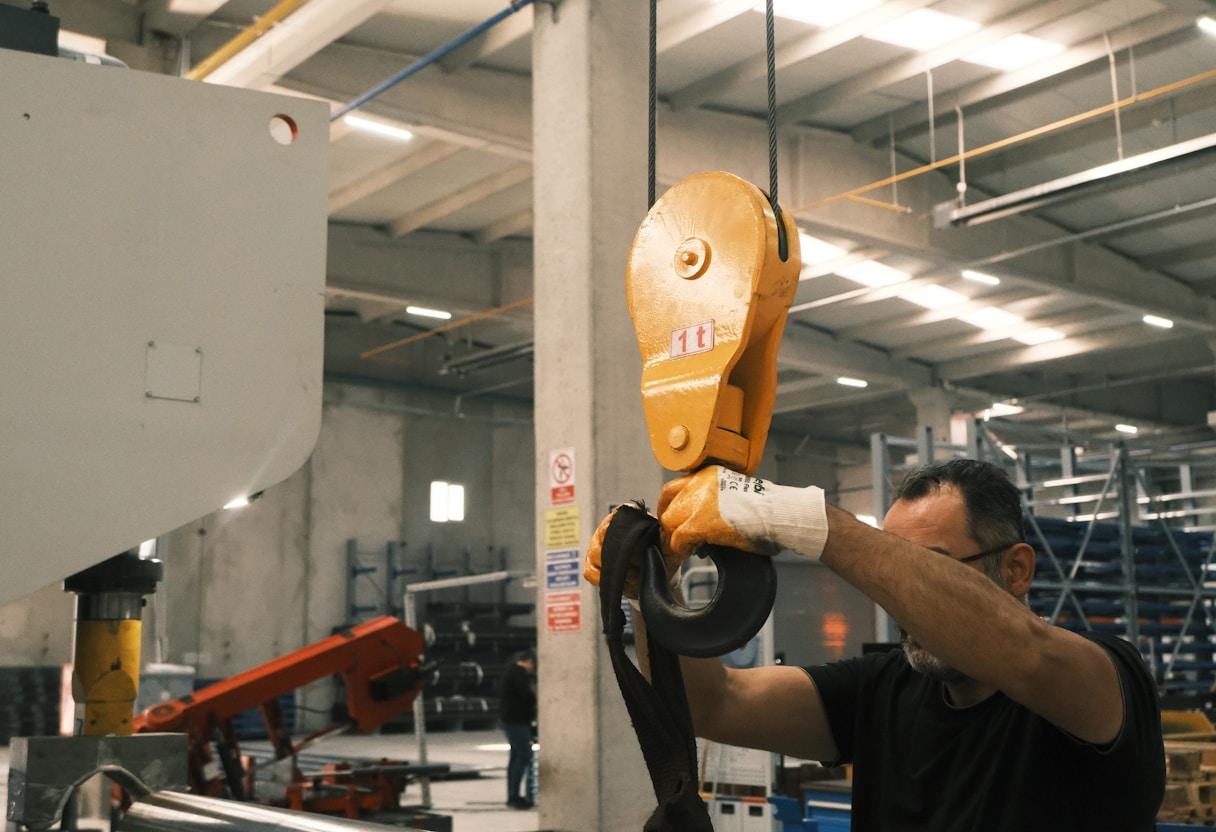What is the future of AI in Belgium by 2030?

You want a clear view of where artificial intelligence is taking Belgian business by 2030. Here is the short version: leaders that act now will compound gains in efficiency, quality and speed, while those that wait will spend more time catching up than innovating. For context, a majority of Belgian companies plan to increase their artificial intelligence investment over the coming years. The combination of machine learning, intelligent automation and data-centric design is already reshaping how work gets done, from Brussels’ innovation clusters to Flanders’ manufacturing lines and Wallonia’s industrial backbone.
Acting now with AI lets you gain a sustained first-mover advantage. Companies delaying adoption will face steeper competition by 2030.
Belgian companies are already showing what this looks like in practice. Materialise, the Leuven-based 3D printing pioneer, uses artificial intelligence to optimize production routes and reduce material waste. Brussels-based Collibra scaled to global leadership in data intelligence by treating governance and quality as business-critical, not optional. These examples are not outliers; they preview how data-driven operations will become standard across sectors.
Multi-regional rollouts across Brussels, Flanders and Wallonia signal that AI transformation in Belgium is a nationwide, not just local, phenomenon.
By 2030, experts expect a significant share of tasks to be automated or augmented, but that also means new roles emerge in data science, artificial intelligence engineering and digital ethics. With the government’s community-led initiative and a network of universities and research centers, Belgium is purposefully building capacity to compete as a European hub for applied artificial intelligence.
In the next sections, you will find how policy will shape adoption, which industries will transform fastest, what this means for your teams, and a practical approach to make progress now. If you lead operations, technology or transformation, consider this your guide to the most material artificial intelligence trends in Belgium and the decisions that will matter by 2030.
Belgium’s AI policy framework and national strategy by 2030
Belgium’s approach to artificial intelligence is anchored in the national initiative AI 4 Belgium Strategy, which lays out how talent, ethics, research and adoption will evolve. The framework prioritizes responsible use, skills development and targeted investment so that artificial intelligence drives competitiveness without compromising trust or safety. For business leaders, this translates into clearer rules, easier collaboration with public programs and an ecosystem designed to help projects move from pilot to production.
Federal and Regional AI Investment Programs
Public funding complements private investment to accelerate adoption. Through the Digital Belgium Skills Fund, companies can access grants for training and implementation. In Flanders, dedicated research centers fund industry projects in manufacturing and healthcare. Wallonia supports agricultural and biotechnology use cases, while the Brussels-Capital Region prioritizes fintech and smart city initiatives. The logic is simple: invest where the regional economy can move fastest, then share learnings nationally.
European Union AI Act Compliance and Belgium’s Position
As the European Union finalizes the Artificial Intelligence Act, Belgium has taken a proactive stance to align policy and business practice. A national observatory works with companies to anticipate compliance while protecting room to innovate. For high-risk applications, expect formal obligations around transparency, data quality, oversight and documentation. Companies that embed these requirements into their delivery lifecycle will reduce legal risk and shorten procurement cycles.
Public-Private Partnerships Driving Innovation
Collaboration remains a Belgian strength. Universities, research centers and industry jointly run programs that speed up applied research and transfer knowledge into operations. Examples include artificial intelligence for diagnostics in university hospitals, quantum research partnerships and consortia focused on sustainable artificial intelligence. For executives, the takeaway is practical: you do not need to build everything in-house. The ecosystem is structured to support co-development and faster time to value.
Looking to 2030, Belgium’s structured approach to policy, investment and collaboration gives organizations a predictable environment to scale solutions, not just experiments. It also sets a common bar for quality, ethics and security, which reduces friction in procurement and cross-border operations.

Sector-specific AI transformation in Belgian industries
Manufacturing and Logistics Automation
Manufacturing lines are digitizing rapidly through predictive maintenance, vision-based quality control and adaptive planning. Companies report fewer unplanned stoppages and shorter changeover times. In logistics hubs, autonomous mobile robots and intelligent warehouse management systems orchestrate tasks across storage, picking and dispatch. At the Port of Antwerp-Bruges, models coordinate vessel movements and predict equipment maintenance, showing how artificial intelligence improves throughput without compromising safety.
By 2030, most Belgian plants will operate with artificial intelligence-enhanced control systems that iterate in real time. The practical goal is straightforward: fewer errors, better capacity utilization, faster cycle times. The companies that do this well standardize data capture at the edge, maintain clean data pipelines and integrate automation with enterprise systems rather than building isolated tools.
Financial Services and AI-Powered Analytics
Financial services lead in advanced analytics, from fraud detection to risk scoring and client servicing. Banks report faster investigation cycles and fewer false positives. Insurers use machine learning for damage assessment and claims routing, accelerating settlement while improving auditability. Strong governance and model risk management have emerged as must-haves, not just compliance checkboxes.
Healthcare AI Applications
Healthcare providers deploy artificial intelligence to triage cases, interpret imaging and predict patient deterioration. University hospitals use decision support to improve accuracy, consistency and speed. Belgian biotechnology companies apply generative and predictive models in discovery workflows to reduce research timelines. The key is to pair clinical expertise with model interpretability, robust data governance and clear escalation pathways.
Professional Services Automation
Legal, tax and consulting teams increasingly rely on document intelligence, retrieval augmented generation and quality assurance assistants. Routine checks are automated while human experts focus on judgment, negotiation and client strategy. By 2030, a large share of repeatable knowledge work will be artificial intelligence-augmented, which will shift hiring profiles toward people who can supervise systems, validate outputs and communicate implications with clarity.
Governance and data quality provide the foundation for sustainable AI scaling across all industries in Belgium.
Across industries, executives see artificial intelligence not as a side project but as core infrastructure. The common thread is measurable improvement: shorter cycle times, fewer errors, and more resilient operations. For small and medium-sized enterprises, the path often starts with a focused pilot in customer service or operations, then scales across departments once the data and integration patterns are proven.

AI adoption rates and business integration trends
Current Adoption Baseline Among Belgian Businesses
As of 2025, artificial intelligence adoption varies by sector and company size. Large enterprises lead, while adoption in small and medium-sized enterprises lags due to resource constraints and integration complexity. The technology sector shows the highest penetration, followed by financial services, manufacturing and healthcare. Typical first movers include customer service automation, analytics for operations and early-stage predictive maintenance.
Regional differences also matter. Companies headquartered in Brussels report higher adoption, influenced by proximity to policy, financial services and startup ecosystems. In Flanders, manufacturers upscale automation and analytics on the shop floor. Wallonia focuses on industrial and biotechnology applications. Each region moves at a different pace, but the direction is consistent: from pilots to scaled platforms.
Projected Growth Trajectories to 2030
Analysts anticipate a steep adoption curve through 2030, driven by maturing cloud platforms, stronger security guarantees and clearer regulatory expectations. Investment is projected to grow at a Compound Annual Growth Rate of roughly 32% between 2025 and 2030, with interest concentrated in machine learning, natural language processing and agents that can handle multi-step work.
- Nine out of ten large enterprises will run comprehensive artificial intelligence strategies, with clear governance and portfolio management.
- Roughly seven out of ten small and medium-sized enterprises will implement foundational solutions in at least one department.
- Cloud-delivered artificial intelligence services will become standard for most organizations that lack in-house data science teams.
- Automation supported by artificial intelligence will touch close to half of core business processes.
Small and Medium-Sized Enterprises versus Enterprise Adoption Patterns
Small and medium-sized enterprises face practical barriers: integration skills, data readiness and change management capacity. They favor modular solutions with clear interfaces and predictable maintenance, then expand gradually. Larger organizations pursue custom models and deeper integration with Enterprise Resource Planning and Customer Relationship Management platforms, often supported by internal platform teams. The gap will narrow as cloud-native tooling becomes simpler and interoperability improves.
Timelines vary accordingly. A large enterprise might plan a 12-18 month program to deploy a complex, regulated solution across regions. Medium-sized organizations often deliver targeted capabilities in six to twelve months. Small businesses can stand up foundational automations in a few months when the process is well-documented and data is accessible.

Workforce transformation and skills evolution
Roles Most Affected by AI Automation
Belgium’s employment analysts estimate that a significant share of current roles will be reshaped by automation and augmentation by 2030. Administrative tasks, repetitive analysis and routine manual work are most exposed. Manufacturing expects automation across a large share of manual operations; financial services anticipate reconfiguration of back-office and advisory tasks as decision support improves.
Expect the most visible changes in customer service, logistics operations, accounting workflows and simple legal documentation. Importantly, this is not a binary story of replacement. It is a shift in task mix. New opportunities open where teams combine process expertise with orchestration of tools and data.
For a deeper dive into sector-by-sector effects, see how AI displacing humans in the workforce across Belgium sectors intersects with new job creation, reskilling and productivity gains.
Emerging AI-Related Professions
New roles are scaling fast: artificial intelligence product managers, machine learning engineers, human and artificial intelligence interaction specialists, prompt architects, algorithmic bias auditors and automation consultants. The demand for roles that blend domain knowledge with technical literacy is already evident in telecommunications, finance and manufacturing. Organizations building these teams early create a performance advantage as they move from pilots to platforms.
Corporate Training and Reskilling Initiatives
Belgian employers partner with regional training bodies such as the Flemish Service for Employment and Vocational Training (VDAB) and Bruxelles Formation to expand curricula that cover data literacy, artificial intelligence safety and hands-on implementation. Teams practice discovery, process mapping and supervision of autonomous agents. A simple but effective capability lift is to teach teams how to write prompts for AI to improve accuracy, explainability and speed in daily work.
AI-focused upskilling and practical prompt engineering open new value streams for Belgian teams by 2030.
The organizations that succeed invest in human and artificial intelligence collaboration models where systems handle routine steps and people focus on judgment, communication and exception handling. This approach improves throughput, reduces error rates and raises employee satisfaction because teams spend more time on meaningful work.

Operational efficiency gains through AI integration
Process Automation ROI Benchmarks
Belgian organizations that deploy artificial intelligence for process automation report material returns within the first 18 months. The strongest improvements appear where processes are data-rich and repeatable: quality control, claims handling, invoice processing, appointment scheduling and order orchestration. When governance, training and integration are in place, the performance step change is consistent.
- Operational costs decrease by 20-40% thanks to fewer manual handoffs and rework.
- Processing speed improves by roughly 45% as queues shrink and exceptions are routed automatically.
- Error rates fall by more than half where validation and reconciliation are built into the flow.
- Employee productivity rises because teams spend more time on value-adding steps.
Intelligent Workflow Engineering Applications
Modern workflows connect Customer Relationship Management, Enterprise Resource Planning and communication platforms with artificial intelligence that learns from interaction patterns. For instance, a service request can trigger identification, classification, document retrieval, draft response and escalation checks, all in one flow. The result is faster completion, better traceability and cleaner data for continuous improvement.
Logistics offers a concrete example: demand signals update inventory policies, robots adjust picking priorities and transport management updates departure schedules in real time. The same principles apply in finance, healthcare and public services when data flows are standardized and interfaces are stable.
Autonomous Agent Deployment
Autonomous agents now support sales, marketing, support and Human Resources with tasks like qualification, follow-up, case triage and policy checks. In a sales context, agents enrich leads, update records and coordinate meetings. In support, they resolve common cases and draft responses while handing off edge cases to human staff. The measurable outcome is the same across departments: faster cycles, more accurate records and higher service levels.

Strategic AI implementation frameworks for Belgian companies
Comprehensive AI Audit and Gap Analysis
Effective programs begin with a structured readiness assessment that covers business goals, data foundations, technology and change capacity. A good audit maps processes to outcomes, identifies data constraints, reviews security and governance, and quantifies potential return. This avoids random acts of automation and prioritizes sequences that deliver value quickly without creating technical debt.
Department-Level Process Evaluation
Assess processes department by department using clear criteria: repetition and variability, availability and quality of data, compliance and risk constraints, and estimated cost-to-value ratio. Prioritize a small number of use cases where you can prove impact within one or two quarters, then scale horizontally across similar processes.
Customized AI Action Plans
Translate the findings into a practical roadmap that spans pilots, scale-up and industrialization. Define milestones, guardrails and owners. Include success metrics for quality, speed, cost and satisfaction. Make time for enablement so teams learn how to supervise systems, perform root cause analysis and adjust models in production.
API Integration and System Interoperability
Integration is where many projects succeed or stall. Favor Application Programming Interface-first approaches, well-documented interfaces and event-driven patterns. Standardize authentication, observe data minimization and enforce role-based access. Build observability from day one with logs, metrics and alerts so that issues are detected before users are impacted.
Organizations that follow a structured playbook and treat artificial intelligence as an enterprise capability, not a one-off tool, typically report higher success rates and lower unit costs over time.

Technology infrastructure and ecosystem development
5G and Connectivity Infrastructure Enablers
Wide 5G coverage and edge computing nodes enable real-time use cases like industrial automation, connected logistics and mixed reality training. As coverage grows, latency drops and reliability rises, which means more workloads can run closer to where data is generated, often in factories, hospitals or ports.
Data Sovereignty and Belgian Cloud Solutions
Belgian providers expand data center capabilities with solutions designed for regulated workloads and data residency requirements. Expect more options for local storage, encryption, key management and auditability. This matters for adoption because procurement, compliance and security teams can approve deployments faster when controls are consistent with frameworks such as the General Data Protection Regulation.
AI Innovation Hubs and Research Centers
Innovation hubs in Brussels, Antwerp, Ghent and Leuven create a dense network where startups, corporates and academia share resources. Centers like IMEC advance semiconductor and artificial intelligence research, while universities run applied programs in diagnostics, manufacturing and sustainable artificial intelligence. The distribution across regions helps companies find partners close to their operations.

Competitive differentiation through AI capabilities
AI-Driven Customer Experience Personalization
Retailers, utilities and service providers use behavioral signals, product graphs and predictive models to personalize offers, content and service. Personalized experiences raise satisfaction and reduce churn when they are transparent, consent-based and easy to opt out of. The operational payoff is clear: better conversion, higher lifetime value and more effective marketing spend.
Data-Driven Decision Making
Manufacturers forecast demand and optimize production mixes with improved accuracy when they ingest supply data, orders and macro signals into a unified model. Executives gain scenario planning capabilities that let teams test decisions against constraints and risk. The result is fewer stockouts, lower working capital and better on-time delivery.
Speed-to-Market Advantages
Organizations that use artificial intelligence for research, prototyping and quality assurance ship faster. In software, automated testing and intelligent code review cut release times. In life sciences, model-assisted research prioritizes promising candidates and streamlines documentation. In professional services, automation compresses time from data gathering to client delivery.

Challenges and risk mitigation strategies
Data Quality and Availability Barriers
Most underperforming projects share one root cause: poor data. Inconsistent definitions, missing values and unclear ownership erode model accuracy and trust. A strong data governance program pays for itself through cleaner inputs and fewer downstream issues. For practical guidance on the discipline itself, see a concise overview of data quality management.
Change Management and Organizational Resistance
Technology is only half the work. Without clear communication, role design and leadership sponsorship, initiatives stall. Address concerns early: explain what will change, how success is measured and how teams will be supported. Build champions in each department, collect feedback and iterate the operating model as adoption grows.
Ethical AI and Bias Mitigation
Ethics cannot be an afterthought. Use diverse datasets and teams, test for disparate impact and document decisions. Establish a review board for high-impact use cases. Make it easy for users to challenge outcomes and request human oversight. These steps reduce risk and improve fairness while strengthening trust with customers and regulators.
Vendor Selection and Technology Lock-In
Favor modular architectures with open interfaces and clear exit strategies. During procurement, assess integration depth, data portability and ongoing support. Pilot with representative workloads, not toy problems. The goal is to secure capability without creating unnecessary dependence on a single vendor or stack.

International positioning and cross-border AI collaboration
Belgium’s Position in the European AI Landscape
Belgium continues to punch above its weight in Europe, thanks to a strong research base, high connectivity and pragmatic regulation. For executives, the European context matters: common rules lower the cost of selling across borders, and shared infrastructures like data spaces further expand what companies can build.
Cross-Border Data Flows and AI Services
Belgian organizations increasingly operate multi-jurisdictional services with standardized privacy and security controls. Interoperable data contracts and consistent governance accelerate collaboration with partners in neighboring countries. This translates into faster market entry and smoother integration when serving international clients.
Talent Attraction and Brain Circulation
Belgium attracts international experts through research networks and specialized visa programs, while nurturing local talent through practical, industry-aligned education. Companies that combine strong onboarding, mentoring and continuous learning retain scarce profiles longer and deliver more stable performance in production.

Stepping back, the AI future of Belgium by 2030 points toward measurable progress: stronger policy foundations, faster adoption across industries, tangible gains in speed and quality, and a workforce that blends technical literacy with domain expertise. The winners will be the organizations that combine a clear roadmap, clean data, thoughtful governance and steady enablement. If your next move is to accelerate automation, improve service quality or unlock growth through smarter decisions, the path is clear: start focused, scale systematically and measure outcomes in business terms.
Ready to be part of Belgium’s next chapter? Join partnerships, tap into innovation hubs, and adopt proven delivery patterns that respect ethics and regulation from day one. Artificial intelligence is not only about technology, it is about building resilient operations, better customer experiences and sustainable growth.
Tip: Start focused with automation, scale systematically, and measure business outcomes for transformation that lasts to 2030 and beyond.
Accelerate your AI journey in Belgium
Discover how our experts can help you design, implement and scale AI in your business—safely, efficiently and compliant with Belgian and EU regulation.
Frequently asked questions about AI in Belgium by 2030
What is the expected AI adoption rate in Belgian businesses by 2030?
Most large enterprises are expected to run company-wide artificial intelligence programs by 2030, and a majority of small and medium-sized enterprises will have at least one function automated or augmented. Adoption grows fastest where data is accessible and integration is straightforward.
How will AI impact employment in Belgium?
Artificial intelligence will change task mixes across many roles. Some repetitive activities will be automated, while new roles emerge in areas such as data engineering, machine learning, human and artificial intelligence interaction and model governance. The net effect depends on how organizations invest in reskilling and role redesign.
What sectors will see the most AI transformation?
Manufacturing, logistics, financial services and healthcare will continue to lead transformation because their processes are data-rich and frequently repeated. Professional services and the public sector will scale next as document intelligence, retrieval augmented generation and workflow orchestration mature.
How is Belgium preparing for AI security challenges?
Security requirements are converging around secure development practices, model hardening, continuous monitoring and clear incident response. Organizations align with European Union regulation while implementing encryption, access control and audit logging across the artificial intelligence lifecycle.
What support is available for businesses adopting AI?
Support includes training funds, regional innovation programs, research partnerships and guidance on compliant implementation. Businesses can access skills development, pilot support and implementation expertise through public initiatives and industry partnerships.
How will AI affect customer service in Belgian businesses?
Expect a hybrid model. Automated agents will handle routine inquiries with high accuracy, while human experts focus on complex, sensitive or high-value conversations. Quality assurance and escalation paths remain essential to maintain trust and satisfaction.
Share this article
Share this article on your social networks


